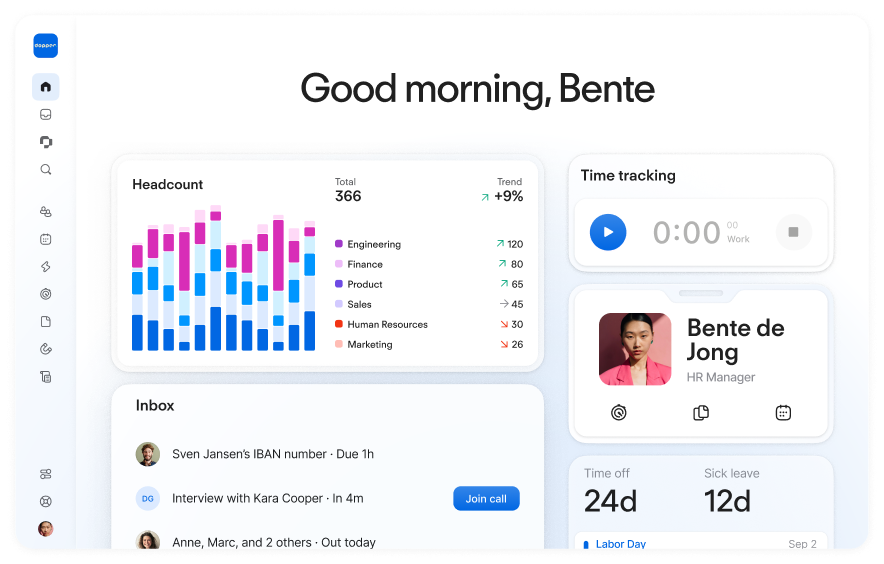30. July 2020
Back to Office Life: 8 Lessons for Adjusting to the New Reality

Regardless of how COVID has changed our attitudes to remote working, people are slowly but surely going back to office life in many cities around the world. But what does office life look like post-lockdown? And what does HR need to do in order to be able to accommodate new health and safety requirements, new employee expectations and an uncertain way of working in the future? This article explains how to help your employees go back to office life safely and productively.
Contents
- 1The Necessities: Keeping People Safe and Spaces Clean
- 2The Practicalities: Who Sits Where and When?
- 3The Humanity: Giving People Choice
- 4The Pressure on Employees: ‘Being Seen’ and Staying Engaged
- 5The Future: Will There Even Be Offices?
- 6The Choice: What Do Employees Want?
- 7The New Normal: The Only Certain Thing Is Change
- 8The Sense of Appreciation: HR Are the New Superheroes
1. The Necessities: Keeping People Safe and Spaces Clean
To meet government requirements many offices have improved the frequency and intensity of cleaning regimes, provided more hand sanitizer and even masks or gloves in some instances, put information signs in place to remind people about how to protect themselves and others, and limited the number of employees allowed in the office at any one time in adherence with social distancing regulations. However, while improved cleaning and distancing is critical, it’s only part of the story. Employees also need to know how to treat each other, and this is where the rules get a bit murky and personal.
A Tip to Help Your Employees Adjust
One way of solving this dilemma involves the use of social distancing wristbands. When people wear these simple but clever little bands they are able to tell others how they feel about personal distancing simply by choosing which color is appropriate for them: Red (please don’t touch), yellow (elbows only) or green (high-fives and handshakes are cool).
2. The Practicalities: Who Sits Where and When?
With social distancing rules in place, companies have had to significantly reduce the number of employees in the office at any one point in times. This means making some desks unusable, or removing them entirely, and making office rosters to regulate who comes into the office on which days.
A Tip to Improve Office Safety
Having divided their workforce into teams, some companies alternate which days or weeks a team goes into the office. Other companies have restricted the number of people allowed in meeting rooms or closed small meeting rooms entirely. There is a third option: closing offices entirely and letting teams work remotely for the foreseeable future – hiring meeting rooms from alternative venues if absolutely necessary.
3. The Humanity: Giving People Choice
Some people in vulnerable groups – such as pregnant women or those with underlying health conditions – are not being required to return to the office at all. But what impact does this have on team life? It depends on the team, and it is a combination of the line manager and HR’s role to ensure that no-one is left out, despite their personal health situation.
A Tip to Prevent Employees From Feeling Left Out
Consider options like hybrid meetings. Combining real/virtual meetings brings people together, both those who are physically in a meeting room (space permitting, of course) and those dialing in to a Zoom / Meet / Chat / Teams call or video.
4. The Pressure on Employees: ‘Being Seen’ and Staying Engaged
While an extended period of working from home has already forced many companies to address the question of whether people are actually working when they’re ‘working from home’, the return of some employees to a physical location may raise this question again.
A Tip to Improve Accountability
Hopefully, by now, your teams will have built the trust required to ensure work gets done no matter where people are based. But, as performance reviews come around, it might be necessary to rely on more formal ways of ensuring targets are met. Encourage employees to keep records of the work they’ve done. It’s not just good practice to document their work, listing achievements can also help them feel good about what they’ve managed to accomplish, despite the odds.
5. The Future: Will There Even Be Offices?
How many desks will an office of the future look like? It’s uncertain, exactly, but it’s likely to be a lot emptier and more open than offices were in the past. Virtual meetings are not going anywhere and some employees may choose not to return to the office at all, if that’s okay with your organization.
Tips for Preparing For The Future
While it’s impossible to predict the future, there are some things HR can, and must do now. Firstly, prepare or adjust your remote working policy. Secondly, decide on whether people will have specifically allocated or shared desks (and agree on when and how these should be cleaned).
6. The Choice: What Do Employees Want?
Regardless of what COVID throws at us next, HR will need to continue communicating clearly with employees about what’s happening now, and what (if anything) they intend to change in future.
Tips for Helping Employees Make Their Choices Clear
Keep using employee surveys to check what employee expectations are: How many want to stay working from home, work from the office 100% of the time, or have a mix of both? As long as you are able to accommodate these choices and they fit with your company culture and your future approach to office- or home-based working, the next step is to introduce a system that accommodates their requirements.
7. The New Normal: The Only Certain Thing Is Change
Flexibility may be the new rule of the game. However, whatever choices your business makes about returning to office life, it’s okay to take your time and to change your perspective as circumstances change.
Tips for Making Decisions About Going Back to Office Life
If you’re uncertain about what the future of your work environment might look like, that’s okay. Likewise, if you’d rather wait and see how things change with time, that’s okay too. Rather take the time to analyse and observe what office life looks like over the next few months and then draw new conclusions.
8. The Sense of Appreciation: HR Are the New Superheroes
COVID-19 has been particularly hard on HR who have been required to be a support function in more ways than one, but it has proven the value of the profession time and time again. As this LinkedIn post demonstrates, HR leaders are superheroes who are finally being celebrated for how they have already helped employees survive these tough times and kept people working. But their jobs are nowhere near over, yet. As the situation unfolds, humans and companies will have to keep adapting.
Tips to Help Guide Your Future Decisions
Be understanding – by using employee listening, for example – but be safe. Be flexible, encouraging and supportive to your employees – but be sensible. For example, bringing teams together for real-life social events is great, if regulations allow, but be aware that alcohol consumption makes it much harder to remember to stay 1.5-2m apart from other people! Lastly: be prepared. COVID isn’t going anywhere. Resurgences will probably happen in your country and perhaps even in your workplace. The chances are that you will need to shut down again.
The only certain future is uncertainty but if we all acknowledge that some things aren’t perfect, but that we can find a way to work together to improve them, what is certain is that we’ll be okay.

